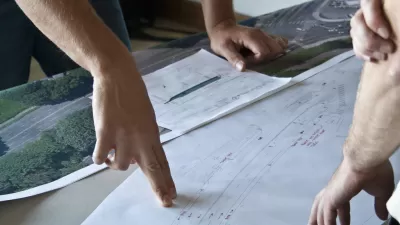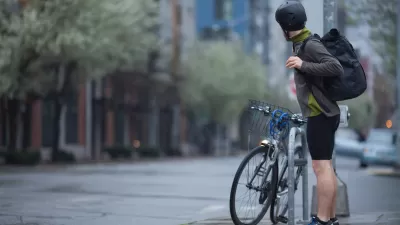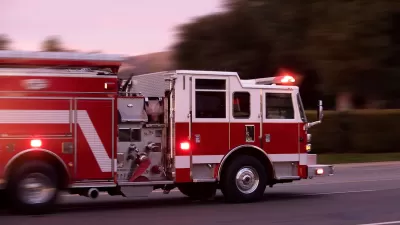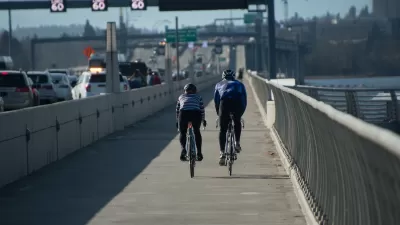Slowing traffic by reducing the width of lanes should not be a one-size fits all approach to reaching Vision Zero.

The idea of putting roads on diets—essentially shrinking the width of driving lanes to slow vehicles down—is a common topic in the recent discourse of how we reduce traffic fatalities down to zero. Multiple cities around the world have instituted such policies by shrinking lanes for vehicular traffic and adding bicycle and pedestrian improvements.
Cathy Tuttle, writing in The Urbanist, argues that while reducing the width of lanes on urban streets is a key component in slowing traffic to make streets safer for all users, the same may not hold true for highways and other designated truck and transit routes. Citing the fatal crash of a Duck Boat on Seattle’s Aurora Bridge in September, Tuttle notes that the bridge stands out as an example of where narrower is not necessarily better for promoting safety.
“… Federal standards for highways recommend 12-foot lanes, in addition to shoulders wide enough for emergency parking and median barriers. Most lanes along I-5 are 12 feet wide. The Aurora Bridge lanes are 9.5 feet wide…
Lanes on highways need to be wide to accommodate wide vehicles moving quickly. Traffic on the Aurora Bridge is posted 40 MPH, while people driving average more than 10 miles an hour faster (p.19 here [PDF]). The Aurora Bridge has had 144 crashes since 2005.”
FULL STORY: Let's Talk About Lane Width

Trump Administration Could Effectively End Housing Voucher Program
Federal officials are eyeing major cuts to the Section 8 program that helps millions of low-income households pay rent.

Planetizen Federal Action Tracker
A weekly monitor of how Trump’s orders and actions are impacting planners and planning in America.

Ken Jennings Launches Transit Web Series
The Jeopardy champ wants you to ride public transit.

California Invests Additional $5M in Electric School Buses
The state wants to electrify all of its school bus fleets by 2035.

Austin Launches $2M Homelessness Prevention Fund
A new grant program from the city’s Homeless Strategy Office will fund rental assistance and supportive services.

Alabama School Forestry Initiative Brings Trees to Schoolyards
Trees can improve physical and mental health for students and commnity members.
Urban Design for Planners 1: Software Tools
This six-course series explores essential urban design concepts using open source software and equips planners with the tools they need to participate fully in the urban design process.
Planning for Universal Design
Learn the tools for implementing Universal Design in planning regulations.
Ada County Highway District
Clanton & Associates, Inc.
Jessamine County Fiscal Court
Institute for Housing and Urban Development Studies (IHS)
City of Grandview
Harvard GSD Executive Education
Toledo-Lucas County Plan Commissions
Salt Lake City
NYU Wagner Graduate School of Public Service





























